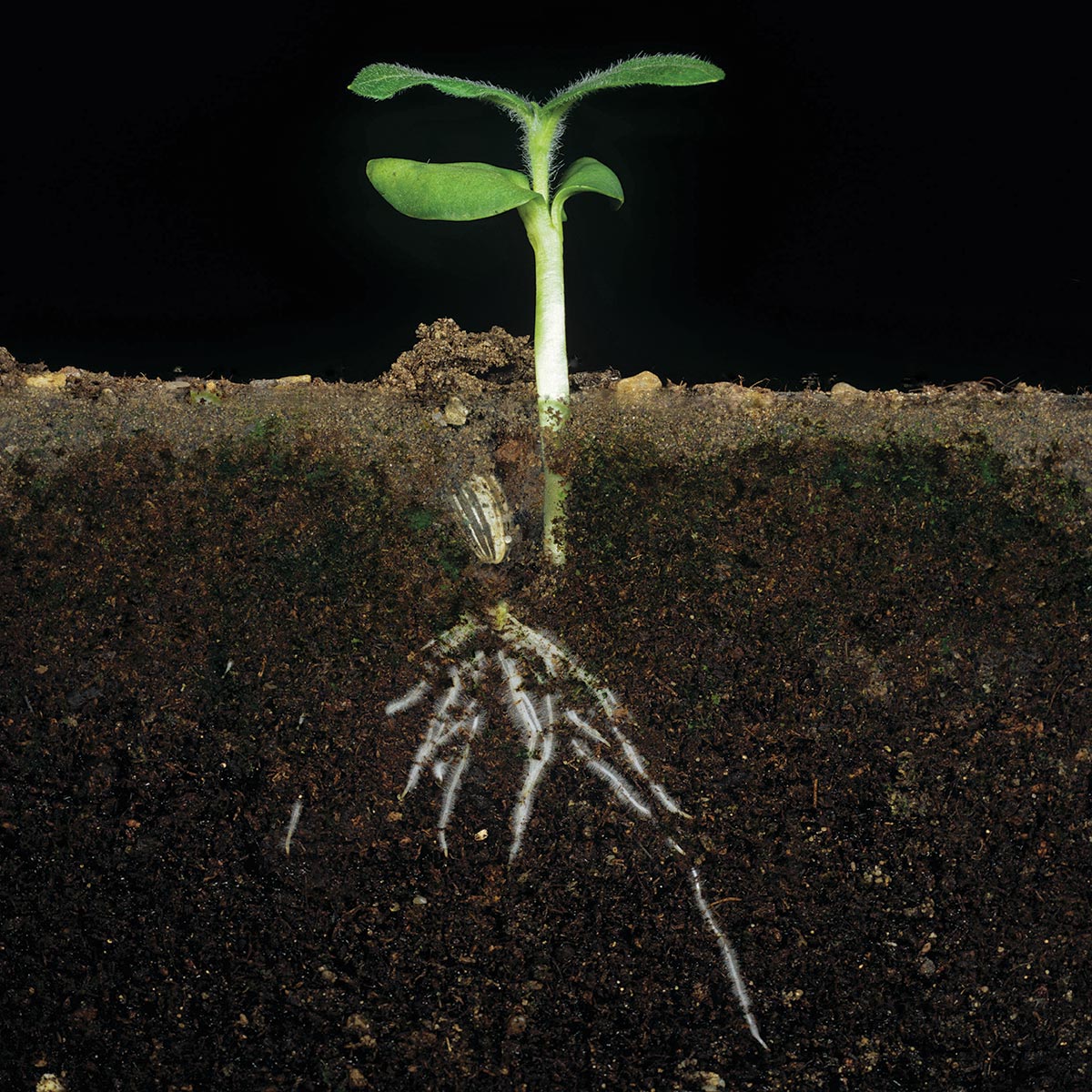The Life Below

A common sunflower gains what it needs to thrive from parts above and below ground. PHOTO Nigel Cattlin/Alamy
It’s hard to get to know the roots of a plant. We can imagine them down there, working their way through the soil, but we generally don’t get to observe them up close and personal in the same way we do stems, leaves and flowers. Despite being out of sight, they are just as vital to the life of a plant as the other organs. Without them, most plants would not have the water they need for photosynthesis or the nutrients required for growth and reproduction. Plus, without strong roots, one stiff breeze could send a plant tumbling across the landscape.
Upon germination, an embryonic root known as a radicle is the first thing to emerge from a seed. It’s the start of what will eventually become an extensive root system. Primary growth occurs at the tips of roots. As they elongate, they work their way through the soil in search of water and nutrients. A tough layer of cells called the root cap protects the growing point and is continually replaced as abrasive soil particles wear it away. Water and dissolved minerals are absorbed through the root’s surface (or epidermis), a process greatly enhanced by root hairs — thin, short-lived, hairlike extensions found near the ends of roots. As the root continues to elongate, older root hairs die off and new ones are formed.
Water entering the root passes through thin cortex cells and a barrier called a Casparian strip, which controls flow and filters out minerals that may be harmful to the plant. From there, water and minerals enter the plant’s vascular system, conductive tissue made up of xylem and phloem cells. The former transport water and minerals throughout the plant, the latter carry sugars produced by leaves and other organic materials, such as protein.
As seedlings, plants start out with a taproot. Some maintain this structure, developing a large, thick taproot that extends deep into the soil. The roots of many other plants quickly branch out, creating a sprawling community of lateral roots that remain relatively shallow. Unlike branches on a stem, which emerge from exterior buds, branch roots grow out from the interior of the main root, a strategy that helps provide protection from hard surfaces and coarse soil particles that can easily damage developing root tips.
Apart from taking in water and minerals and holding a plant in place, roots can serve a variety of other functions. Some plants, such as winecups (Callirhoe involucrata), have thick storage roots composed of starch, which help a plant survive when conditions are unfavorable. In the case of biennials, such as American wild carrot (Daucus pusillus) or standing cypress (Ipomopsis rubra), large taproots store the energy necessary to produce towering flower stalks in their final year of growth. When the roots of bald cypress (Taxodium distichum) are regularly flooded, the tree develops prominent buttress roots — wide extensions that grow out from the base of the trunk and help with support. Upright outgrowths called cypress “knees” also form on the roots of bald cypress. The function of these odd structures is still up for debate.
The roots of grasses and other similar species have fibrous root systems. Lacking prominent taproots, they are instead composed of numerous, fine, threadlike roots, oftentimes reaching several feet deep into the soil. The massive root systems of grasses help reduce soil erosion and are important players in carbon sequestration and nutrient cycling.
While the actions of roots go largely unseen, we can be sure as we observe the lives of plants above ground, they would be nothing without their subterranean support systems.
Daniel Murphy is collections curator at Idaho Botanical Garden and founder of Awkward Botany, a plant science blog. A punk rock fan and zine writer, he often cheers for the underdog and enjoys researching, photographing and writing about weeds.
